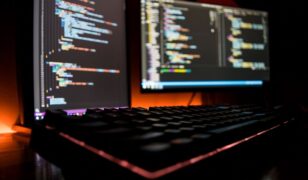IBM scientists achieve critical steps to building first practical quantum computer
 IBM scientists unveiled on April 29 two critical advances towards the realization of a practical quantum computer. For the first time, they showed the ability to detect and measure both kinds of quantum errors simultaneously, as well as demonstrated a new, square quantum bit circuit design that is the only physical architecture that could successfully scale to larger dimensions.
IBM scientists unveiled on April 29 two critical advances towards the realization of a practical quantum computer. For the first time, they showed the ability to detect and measure both kinds of quantum errors simultaneously, as well as demonstrated a new, square quantum bit circuit design that is the only physical architecture that could successfully scale to larger dimensions.
With Moore’s Law expected to run out of steam, quantum computing will be among the inventions that could usher in a new era of innovation across industries. Quantum computers promise to open up new capabilities in the fields of optimization and simulation simply not possible using today’s computers. If a quantum computer could be built with just 50 quantum bits (qubits), no combination of today’s TOP500 supercomputers could successfully outperform it.
The IBM breakthroughs, described in the April 29 issue of the journal Nature Communications (DOI: 10.1038/ncomms7979), show for the first time the ability to detect and measure the two types of quantum errors (bit-flip and phase-flip) that will occur in any real quantum computer. Until now, it was only possible to address one type of quantum error or the other, but never both at the same time. This is a necessary step toward quantum error correction, which is a critical requirement for building a practical and reliable large-scale quantum computer.
IBM’s novel and complex quantum bit circuit, based on a square lattice of four superconducting qubits on a chip roughly one-quarter-inch square, enables both types of quantum errors to be detected at the same time. By opting for a square-shaped design versus a linear array – which prevents the detection of both kinds of quantum errors simultaneously – IBM’s design shows the best potential to scale by adding more qubits to arrive at a working quantum system.
“Quantum computing could be potentially transformative, enabling us to solve problems that are impossible or impractical to solve today,” said Arvind Krishna, senior vice president and director of IBM Research. “While quantum computers have traditionally been explored for cryptography, one area we find very compelling is the potential for practical quantum systems to solve problems in physics and quantum chemistry that are unsolvable today. This could have enormous potential in materials or drug design, opening up a new realm of applications.”
For a world consumed by Big Data, quantum computers could quickly sort and curate ever larger databases as well as massive stores of diverse, unstructured data. This could transform how people make decisions and how researchers across industries make critical discoveries.
One of the great challenges for scientists seeking to harness the power of quantum computing is controlling or removing quantum decoherence – the creation of errors in calculations caused by interference from factors such as heat, electromagnetic radiation, and material defects. The errors are especially acute in quantum machines, since quantum information is so fragile.
“Up until now, researchers have been able to detect bit-flip or phase-flip quantum errors, but never the two together. Previous work in this area, using linear arrangements, only looked at bit-flip errors offering incomplete information on the quantum state of a system and making them inadequate for a quantum computer,” said Jay Gambetta, a manager in the IBM Quantum Computing Group. “Our four qubit results take us past this hurdle by detecting both types of quantum errors and can be scalable to larger systems, as the qubits are arranged in a square lattice as opposed to a linear array.”
The work at IBM was funded in part by the IARPA (Intelligence Advanced Research Projects Activity) multi-qubit-coherent-operations program.
Source: IBM







